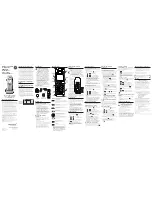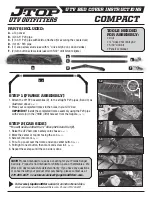
30
Operating Manual
DE
EN
FR
IT
ES
PT
NL
SV
FI
DA
NO
EL
CZ
HU
PL
HR
SR
SK
SL
ET
LT
LV
RO
BG
MK
power of the electrical socket used is available for
charging the vehicle.
– Before installation, check that the necessary
power for charging a vehicle can be continuously
provided with the currently available domestic
installation. If necessary, protect the domestic
installation with an energy management system.
– The charger should preferably be operated in
earthed mains supply systems. The protective
conductor must be properly installed.
– If you are unsure about the electrical domestic
installation, contact a qualified electrician.
Porsche recommends that you use a certified
Porsche service partner.
– If you intend to use the charger with a photovol-
taic system, contact a Porsche partner.
– In order to make full use of the charger and to
ensure fast vehicle charging, use either NEMA
electrical sockets with the highest possible
current rating appropriate for the power plug or
industrial electrical outlets to IEC 60309.
– When charging the high-voltage battery via the
household/industrial electrical outlet, the
electrical installation may be loaded to its
maximum capacity. Porsche recommends that
you have electrical installations used for charging
checked regularly by a qualified electrician.
Ask a qualified electrician which inspection inter-
vals are appropriate for the installation. Porsche
recommends that you use a certified Porsche
service partner.
– On delivery, the charging current is automatically
limited to prevent overheating of the electrical
installation. Have a qualified electrician bring the
charger into operation and set the charging
current limit as required for the domestic installa-
tion.
f
Refer to chapter “Charging current limiting” on
page 37.
Intended Purpose
Charger with integrated control and protection for
mode 2 charging (except Japan and Uruguay),
for charging vehicles with high-voltage batteries that
meet the generally applicable standards and direc-
tives for electric vehicles.
e
Always use the appropriate device version for the
local mains supply.
f
Refer to chapter “Technical Data” on page 49.
The charger may only be used as a combined unit
consisting of supply cables, control unit and vehicle
cable.
It is suitable for use outdoors.
Key to Pictograms
Depending on the country, various pictograms may
be attached to the charger.
Operate the charger within
a temperature range from –30 °C
to +50 °C.
The charger should not be
operated at altitudes of more than
5,000 m above sea level.
The charger is equipped with
a non-switched protective
conductor.
The charger is equipped with
a switched protective conductor.
Dispose of the charger in compli-
ance with all applicable disposal
regulations.
Do not use extension cables or
cable reels.
Do not use (travel) adapters.
Do not use multiple sockets.
Do not use chargers with
damaged electronics or
connecting cables.
Risk of electric shock due to
improper use.
Observe the operating instructions
provided, particularly the warnings
and safety instructions.
The surface of the charger can
become very hot.
Operating the charger in non-
earthed mains supply systems
(e.g. IT networks on ferries) is
prohibited. Operate the charger
only in earthed mains supply
systems.
















































